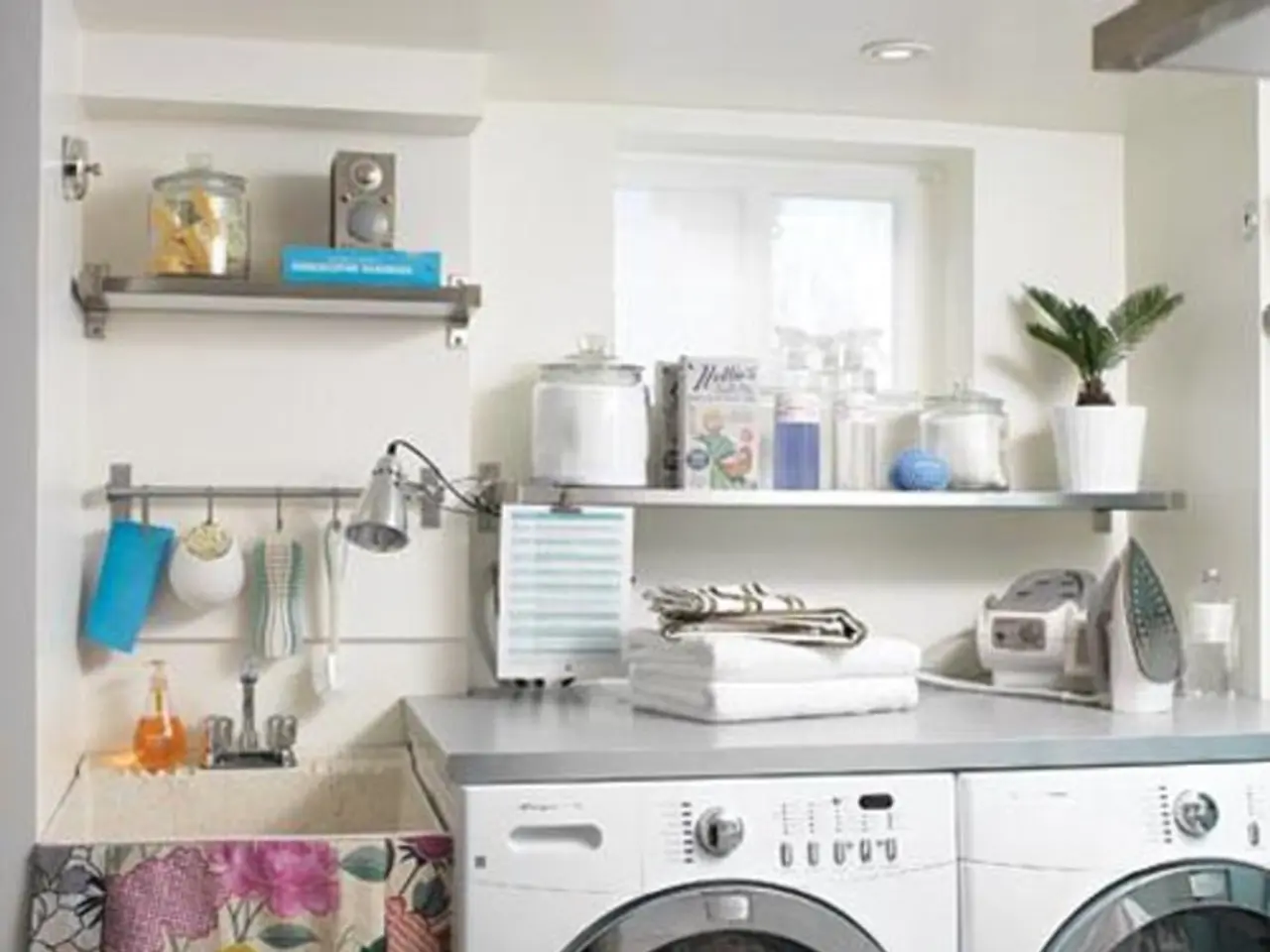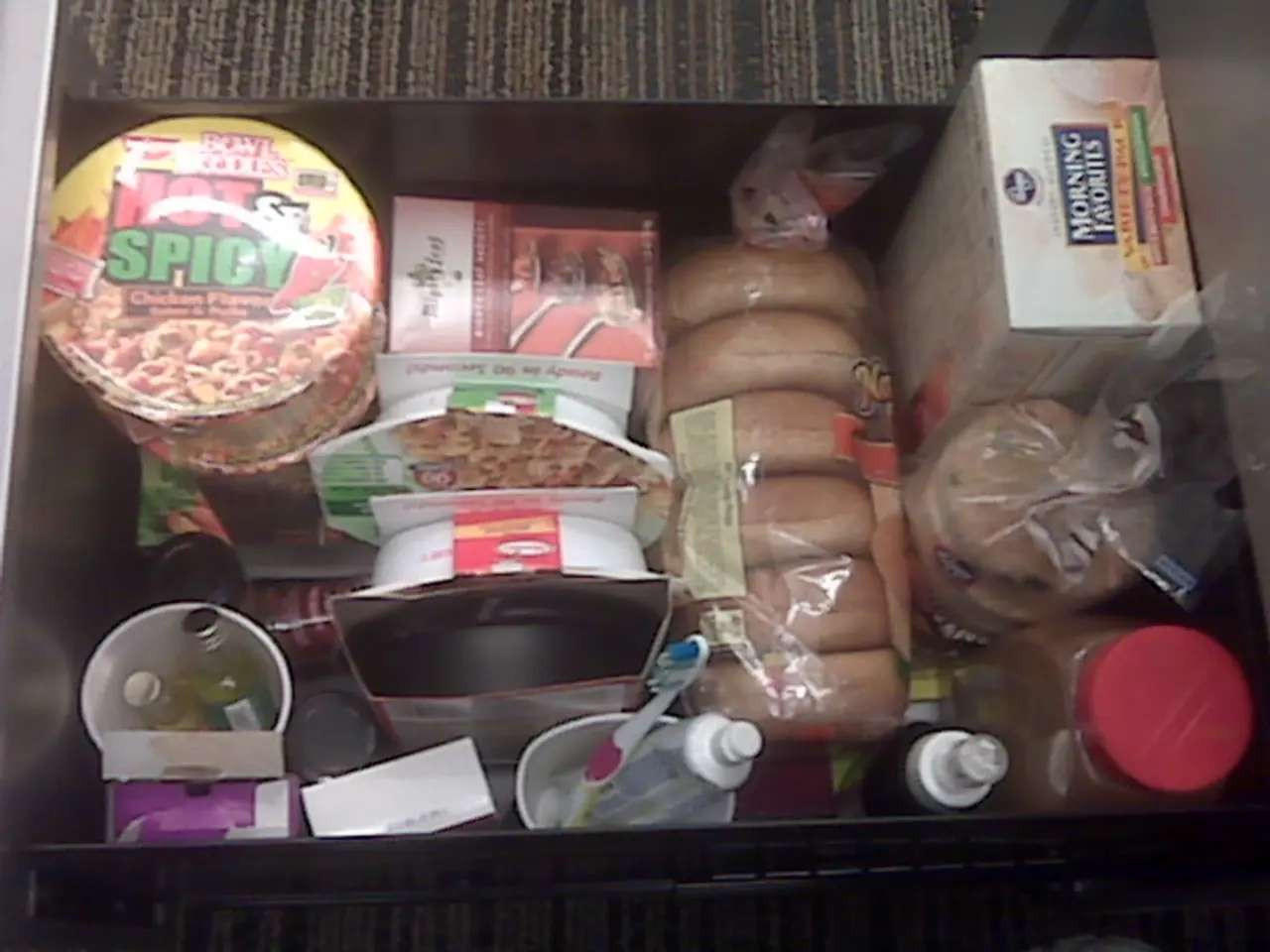Understanding the appropriate size for your dehumidifier? Consult these straightforward measuring guidelines
In the quest for a comfortable and mold-free home, understanding the right dehumidifier for your space is crucial. Here's a guide to help you make an informed decision.
Firstly, it's essential to know that the size of a dehumidifier is measured by its extraction rate, given in litres per day (L/day). For instance, a 12L dehumidifier can generally extract up to 12 litres of water from the air over a 24-hour period.
For medium-sized rooms, such as living rooms or conservatories, which typically span around 500 square feet, a dehumidifier with a capacity of 12 to 20 litres per day is usually recommended. This capacity effectively handles fluctuating humidity levels without being oversized or undersized.
In these cases, a model with a built-in humidistat is advisable. This feature allows the dehumidifier to automatically regulate humidity levels, ensuring consistent comfort without excessive drying.
When it comes to smaller spaces like utility rooms, bedrooms, and home offices, a 10L to 12L dehumidifier is usually sufficient. However, for spaces with little natural airflow, like utility rooms or bathrooms without windows, a larger capacity may be necessary.
On the other hand, for medium-sized spaces like lounges, conservatories, and laundry areas, a 15L to 20L dehumidifier is recommended. For whole-home solutions or multiple rooms, choose by property size: 10L or 12L for smaller homes, 20L for three-bedroom homes, and 25L for properties with four or more bedrooms.
In cooler temperatures, compressor dehumidifiers can struggle. In such cases, a desiccant dehumidifier is often a better choice for cold conditions. Desiccant dehumidifiers are designed for spaces where temperatures are regularly lower than 15°C and are lightweight and easily maneuverable.
Regular dehumidifier maintenance, including cleaning the water tank and air vents, checking or replacing the filter, is important to keep the unit running efficiently. Additionally, choosing a model with a water tank capacity sufficient for your space or with continuous drainage options is advised to avoid frequent emptying, especially for larger tanks.
In conclusion, to ensure efficient moisture removal and maintain a comfortable home environment, it's crucial to consider the size of the room, the dampness of the space, airflow, frequency of use, poor ventilation, internal walls with no insulation, and the number of occupants.
References: [1][2][3][4]
- The costs of running a dehumidifier can be impacted by factors such as the size of the unit, energy efficiency, and operating hours.
- Good home design should consider the installation of adequate ventilation in the bathroom and other humid areas of the house to prevent mold growth.
- For a health-and-wellness lifestyle, it's vital to keep your home's humidity levels consistent, especially in rooms like the bedroom, according to science.
- When building or renovating a home, don't forget to pay attention to door and window seals to prevent moisture ingress.
- A well-insulated home helps regulate temperature and humidity, reducing the need for heating or cooling, and contributing to energy savings.
- Incorporating fitness-and-exercise routines at home can generate heat and humidity, so it's important to consider this when choosing the right dehumidifier.
- To maintain a comfortable and mold-free home, make sure to regularly inspect your home-and-garden areas for any signs of dampness or excess humidity, paying particular attention to areas with poor drainage.
- Before buying a dehumidifier, ensure you have a clear understanding of your budget, as costs can vary widely depending on the features and capacities you require.
- By following this guide and understanding the factors that influence humidity levels in your home, you can make an informed decision and find the right dehumidifier to maintain a comfortable and mold-free living space.
References: [1][2][3][4]




